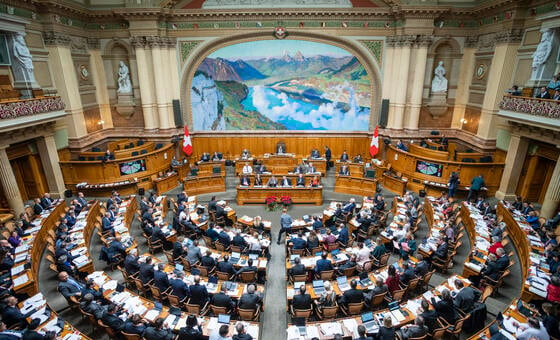The planet is heating up – fast. According to the latest report from the Intergovernmental Panel on Climate Change, the United Nations body for assessing the science related to climate change, “keeping warming to 1.5°C above pre-industrial levels requires deep, rapid and sustained greenhouse gas emissions reductions in all sectors. Emissions should be decreasing by now and will need to be cut by almost half by 2030, if warming is to be limited to 1.5°C.”
Parliaments and those who work in them can lead the way in many respects. As a first step, they can decarbonize their place of work by putting in place the IPU’s 10 actions for greener parliaments (and those who work in them). Here are three steps to get started:
- Set clear net-zero targets
To reach any climate target, concrete, time-bound, measurable objectives must be set and met. Adopting a sustainability strategy based on such objectives is key to success.
To turn net-zero goals into reality, the IPU recommends that an internal task force or group plot progress through a tracking system; conduct annual sustainability audits and communicate their results to MPs; regularly assess potential climate vulnerabilities; and target areas that require resilience-building to withstand climate threats – all to ensure continuous improvement.
To ensure that transformation into a green parliament becomes an institutional goal, it must be expressed officially as a political statement. In Israel, the tone from the top, from former and current parliamentary Speakers, has helped institutionalize climate action as a cultural issue, according to MP Avi Dichter.
- Building efficiency
Parliaments aiming to become net-zero should start with the parliamentary building itself. According to the International Energy Agency, in 2021 the operation of buildings accounted for 27% of global energy sector emissions.
While many parliaments around the world are in old buildings that are not necessarily energy-efficient, there are still measures that can be taken to reduce carbon emissions.
These include replacing fossil fuel technology with renewable energy alternatives, setting new net-zero standards for the building, measuring waste production and ensuring efficient recycling systems.
For example, the Indian parliament, according to MP Sasmit Patra, has committed to rainwater harvesting and solar energy use to improve efficiency. Israel’s Knesset uses movement sensors to save energy on air conditioning and electricity when MPs leave the premises, as well as roof-mounted solar panels to leverage the country’s climatic conditions for parliamentary good.
- Going the extra mile for green travel
Parliamentarians are often required to travel for work, which can be a significant source of carbon emissions. To decarbonize parliamentary transport, parliaments can invest in a zero-emissions vehicle fleet, minimize non-essential air and rail travel, and adopt hybrid ways of working to reduce commuting where possible. Many of New Zealand’s MPs drive 100% electric BEV vehicles, according to MP Scott Simpson; and the United Arab Emirates’ parliament now uses a number of electric and hybrid vehicles, according to MP Meera Al Suwaidi.
Climate action begins at home
The IPU’s new campaign, Parliaments for the Planet is designed to mobilize parliaments to take action on the climate emergency. Parliamentarians worldwide can take action to reduce the carbon footprint of their parliaments by changing day-to-day behaviour, improving the energy efficiency of the buildings in which they work, and reducing the carbon emissions generated by work travel.
By doing so, parliamentarians can demonstrate their commitment to fighting climate change, and inspire others to take action.
Find out more about the IPU’s campaign to mobilize parliaments to act on the climate emergency.












